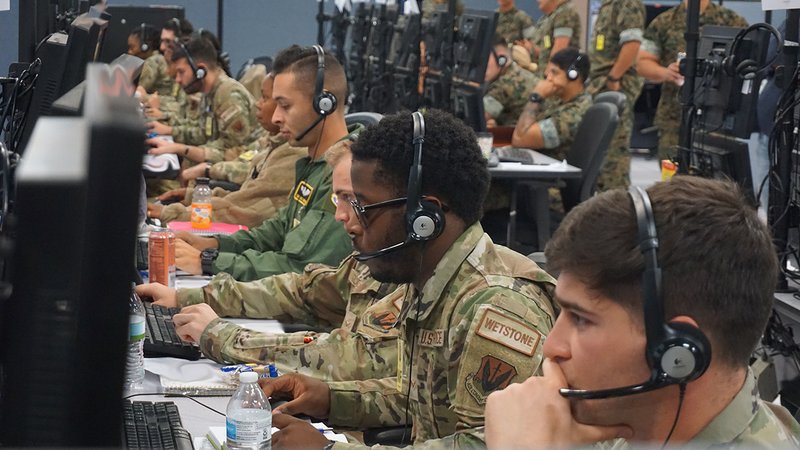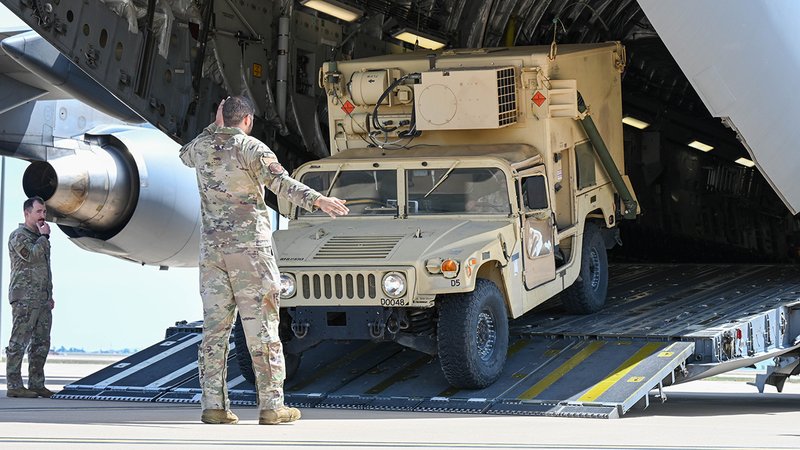Chemistry, not physics? How to train for data-centric warfare
The I/ITSEC event held annually in Orlando in November always opens with a panel of ‘senior leaders’, usually drawn from the Pentagon and wider US military, discussing the theme for that year’s event. 2023 was no exception, with the topic being ‘Sustaining a Global Force in a Digital World’.
Amongst the speakers, Caroline Baxter, Deputy Assistant Secretary of Defense for Force Education and Training, from the Office of the Under Secretary of Defense for Personnel and Readiness, said that the meaning of being ready was evolving for two reasons: recent global events, and the mindset shift demanded by the pace of technological change... Continues below
Newsletter Sponsor:

Above: According to Baxter, the DoD needs to make better use of LVC tools to achieve true multi-domain training. (Photo: USAF)
Readiness for the future fight involves ‘chemistry, not physics’. She characterised physics as interactions between fundamental constituents of the observable universe, such as matter and energy which ‘relatively speaking are precise and predictable’. Chemistry is about transformation, reactions and changes to substances.
‘20th century warfare is physics,’ Baxter said, ‘but 21st century warfare is chemistry – data-centric, with artificial intelligence in platforms, the battlefield shifting, the enemy adapting and advantages changing. And we need to stop thinking in physics when chemistry defines the battlespace.’

Providing mission-critical training and equipment, this elevated level of innovation can only be provided by the best in the industry. Visit FlightSafety.com.
She said that the DoD was ‘redoubling its efforts’ on tactical and operational level training that ‘aggregates to strategic level advantage’. The intention is to ‘close gaps in the training that drives the proficiency of the force for the future fight’.
Indeed, ‘we can no longer “white card” [create exercise play with artificially inserted events] cyber, space and other domains during exercises’, Baxter said, adding that there was a need to change professional military training curricula and the educational mindset.
‘We must not be content with producing straightforward capabilities; we must [nurture] creative, critical and courageous thinking,’ she urged.
Baxter said that her office was now looking at generating a methodology that could accurately assess gaps in US military training and education, and highlighted several aspects of this.
Other articles in this newsletter:
Express delivery – are rapid-development COTS-based simulators finally ready to roll?
Second chances? What’s on the table as Improbable Defence’s UK arm is reborn as Skyral
A new governance structure for defence training has been introduced, overseen at three-star level, with the establishment of the Military Training Executive Steering Group (MTESG) in addition to the existing Military Training Capabilities Group (MTCG).
This new structure ‘reviews, approves and oversees the execution of service-specific and joint training initiatives’, Baxter said, adding that there was a new budgetary oversight and development process. ‘These are the strategic enablers which ensure that [US] forces are able to do the job they’re supposed to do on a rock-solid base of tactical and operational training.’
One aim of the new structure is to ensure the building and standardising of live, virtual, and constructive (LVC) tools to ‘develop realistic training that prepares people at scale for emerging threats and developing capabilities’.

Above: Common training standards across the services will foster greater integration and interoperability. (Photo: USAF)
Another objective is to identify and remove information-sharing barriers to joint and coalition training, and institute common training standards across the services to promote integration and support interoperability.
Baxter said the new system was already showing value with over 20 ‘data-informed lines of effort’ under way.
She concluded by emphasising the need to be able to adapt quickly to ‘new and shifting requirements and nailing down what those specific requirements are’ and ensuring that training keeps pace with them, which the new governance architecture should support.
Don't want to miss out on future Decisive Edge content? Make sure you are signed up to our email newsletters.











